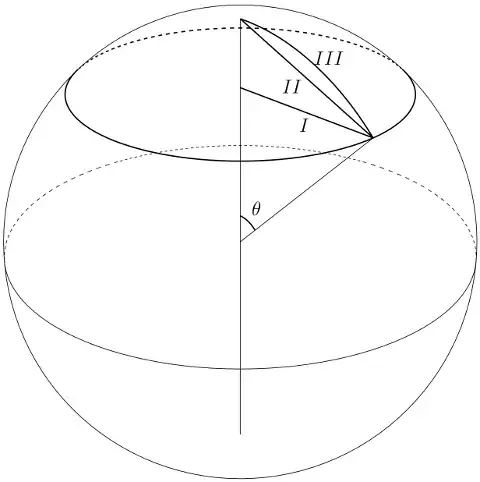A circle that you simply draw on the surface of a ball is just
like a circle that you make by intersecting a plane with a ball,
which is just like a circle you draw with a compass on a plane,
assuming this is all done in three-dimensional Euclidean space.
Each of these is a closed path in space with certain properties of curvature.
You can always construct the plane in which the circle lies,
even if that plane is not how you defined the circle.
You can even construct any of an infinite number of balls whose surfaces
happen to contain the circle, if you want to.
In either of the situations you described, you have a particular ball
you are concerned with, so we don't have to be concerned with all possible
balls, just this one. But there is always a plane containing the circle,
and the diameter of the circle in that plane is a straight line.
What you do need to think about is how you want to use the radius.
If the circle is mainly interesting because it is
the outer boundary of the set of all points you can
reach by traveling a certain distance from a certain point $P$ on
the sphere, then the relevant measurement is the length of the
shortest path on the sphere from $P$ to one of the points on the circle.
I would consider this to be the radius of the circle measured on the
surface of the ball.
But if you want to know the circumference of the circle, or if you want
to write a vector expression parameterizing the circle, the planar
radius of the circle (measured along a straight line in the plane
of the circle) might be more useful.
